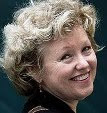By Georgeanne Irvine
My toes have now traipsed on the Trail of ’98 and my heart
is filled with a gold mine of treasured memories from the experience! I’m just back from a splendid trip to Alaska,
where I was the guest enrichment lecturer on a Silverseas Cruise ship. In my June 1 blog, I explained how the upcoming
trip inspired my interest in the Alaska (Klondike) Gold Rush of 1898,
especially because my grandfather, Pete, was a Klondiker. He trekked the Chilkoot Trail in bone-chilling
40-below-zero temperatures, rescued other prospectors who were buried in the famous
Chilkoot Pass avalanche, shot the perilous White Horse rapids, survived typhoid
fever, and encountered the notorious con man, Soapy Smith. This blog picks up where the other left off.
To Talk or Not to Talk
About the Klondike
The day my three Klondike Gold Rush books arrived in the
mail, I immediately read two and skimmed the third. I continued my online research, downloaded
more historical photos, restored the family photos of Pete’s adventures, and
reviewed two additional Gold Rush books from my sister. Even so, I hadn’t decided whether I should or would
include a talk about Pete’s Gold Rush experience in my cruise ship lecture repertoire. I had been asked to prepare four talks about
critters and conservation because my expertise is animal stories. In addition, the Alaska
expert on the cruise would undoubtedly lecture about the Gold Rush. Pete’s story was a personal, first-hand
account of this dramatic moment in history, though, so I emailed the Silverseas
enrichment program manager with my suggested non-animal topic. Within
seven minutes he responded, “What a wonderful idea! Nothing like personal experiences to get
people’s attention.”
Are Two Klondike Talks Better Than
One?
In late July our ship, the Silver Shadow, set sail from
Vancouver en route to several Alaskan ports including Skagway, a gateway city
to the Gold Rush. My three animal talks
plus Blazing the Trail of 1898: My
Grandfather’s Experience as an Alaska Gold Rush Klondiker were
Powerpoint ready. As I expected, the Alaska
expert was featuring a talk about Gold Rush history. I was OK with that because I knew my story was unique—until one of
the staff said he was surprised that two lecturers were speaking on the same
topic. Gulp! What should I do? I had prepared several extra animal
presentations. Should I scrap my
Klondike tale for Bentley the Tree
Kangaroo’s Big Apple Adventure? No…at
least yet.
Instead, I took a break from studying my own
presentations to listen the other Klondike talk. I wanted to see how similar it was to mine. Trail of
the Argonauts: The Great Klondike Gold Rush was fascinating but very
different! What a relief! A few of the photos overlapped but that was
inconsequential because the two talks truly complemented each other. The Alaska expert's historical perspective
of the Gold Rush set the stage for Pete’s personal experience—and the
passengers attended and loved both of our talks! To my surprise, I received more compliments
on my Klondike tale than any of my animal presentations.
The Grand Finale
My Alaskan adventure was filled with incredible wildlife
sightings, from orcas and humpback whales to sea otters and spawning salmon. We explored fjords, gazed at glorious
glaciers, posed for pictures on the pontoon of our float plane after it landed
on a glacial lake, and meandered through rain forests lush from the 150 inches
of annual precipitation. My most magical
experience, however, was a misty morning on the Chilkoot Trail, sloshing
through mud, slipping on rocks, and climbing steep hills, all in memory of
Pete! The guide was ecstatic because I
was the first Klondiker descendent he had ever met. He treated me like a celebrity plus he wanted
to know every detail about Pete’s story on the Trail of ’98.
Although we hiked a mere 2.5 miles of the Chilkoot Trail’s
33 miles, just being in the area made me feel closer to Pete, who has been gone
for 45 years. (Note that the remaining
part of his journey to gold country was another 550 miles.) At the end of our hike we floated by raft
down the Taiya River to what was once Dyea, the boom town from which my
grandfather’s journey began. I was
amazed—and delighted—to find that Dyea has been reclaimed by nature. It is now a wildlife-rich forest on the edge of
an estuary, inhabited by black bears, bald eagles, porcupines, deer, and many
more animals.
I can never retrace or relive Pete’s extraordinary adventure
but I can imagine and appreciate the hardships he endured as well as share his
pioneering spirit through my Klondike talk, which now has an animal element
after all.













